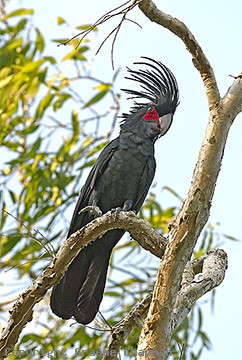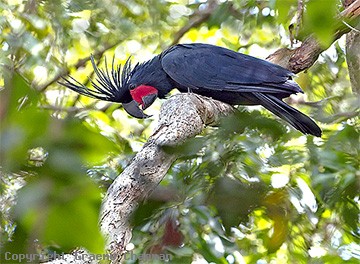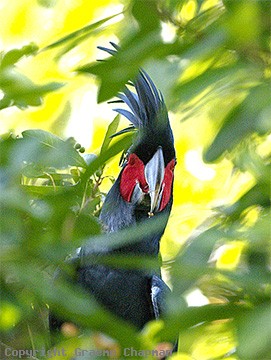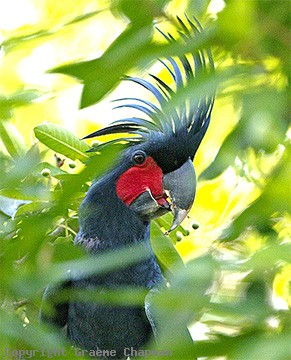Australian Birds
Palm Cockatoo
Probosciger aterrimus
(Viewing 4 of 15 photos)
|
The Palm Cockatoo is the largest cockatoo to occur in Australia where it has a very limited distribution on far north Cape York Peninsula south to about Princess Charlotte Bay. Palm Cockatoos mainly inhabit rainforest but move out into nearby areas in search of food. When breeding, they occur in pairs or family groups but when concentrating on food sources gatherings of up to 30 have been reported occasionally but this is rare. Unlike most other cockatoos they never form large flocks.
Perhaps the most notable aspect of Palm Cockatoo behaviour is the habit called drumming. Favoured nest holes are large vertical hollows such as occur at the top of a broken-off tree. After carefully selecting and pruning a length of wood to be used as a "drumstick", male birds hold it in the foot and repeatedly bang the outside of the hollow, the resulting sound audible for up to 100 metres or so. Sometimes he uses a large nut instead. Often when this happens a female is watching close by so it is assumed that it may be a courtship ritual, but no doubt it also advertises ownership of the territory to other birds. Videos of this behaviour can be seen by googling "Palm Cockatoo drumming".
|

263201-D ... Palm Cockatoo |

263202-D ... Palm Cockatoo |
 |

263203-D ... Palm Cockatoo |

263204-D ... Palm Cockatoos feed on a variety of fruits in the rain forest. |
 |
Previous 1 2 3 4 Next
Return to Photo Library page









